Development of a Tree-Shaped Hybrid Nanogenerator Using Flexible Sheets of Photovoltaic and Piezoelectric Films
Abstract
1. Introduction
2. Operation of the TSHG for Motion and Solar Energy Harvesting
2.1. Fabrication of the Polyvinylidene Fluoride (PVDF) Polymer-Based Leaf
2.2. Fabrication of the Photovoltaic Cell Based Leaf
3. Manufacturing of the TSHG
4. Circuit Construction for the TSHG
5. Performance Measurement
5.1. Basic ElectricalOoutput of the Piezoelectric Nanogenerator
5.2. Basic Electrical Output of the Photovoltaic Solar Cell
6. Output Measurements of the Tree-Shaped Hybrid Nanogenerator (TSHG)
7. Conclusions
Author Contributions
Funding
Conflicts of Interest
References
- Van Atta, L.C.; Northrup, D.L.; Van Atta, C.M.; Van de Graaff, R.J. The Design, Operation, and Performance of the Round Hill Electrostatic Generator. Phys. Rev. 1936, 49, 761. [Google Scholar] [CrossRef]
- Li, Z.; Chen, J.; Zheng, J.; Pradel, K.C.; Fan, X.; Guo, H.; Wen, Z.; Yeh, M.H.; Yu, C.; Wang, Z.L. High-efficiency ramie fiber degumming and self-powered degumming wastewater treatment using triboelectric nanogenerator. Nano Energy 2016, 22, 548–557. [Google Scholar] [CrossRef]
- Chen, J.; Zhu, G.; Jing, Q.; Bai, P.; Yang, W.; Qi, X.; Su, Y.; Wang, Z.L. Personalized Keystroke Dynamics for Self-Powered Human-Machine Interfacing. ACS Nano 2014, 9, 105–116. [Google Scholar] [CrossRef] [PubMed]
- McEvoy, A.; Castaner, L.; Markvart, T. Solar Cells: Materials, Manufacture and Operation, 2nd ed.; Elsevier Ltd.: Oxford, UK, 2012; pp. 3–25. ISBN 9780123869647. [Google Scholar]
- Li, G.; Zhu, R.; Yang, Y. Polymer Solar Cells. Nat. Photonics 2012, 6, 153–161. [Google Scholar] [CrossRef]
- Saga, T. Advances in Crystalline Silicon Solar Cell Technology for Industrial Mass Production. NPG Asia Mater. 2010, 2, 96–102. [Google Scholar] [CrossRef]
- Scaff, J.H.; Ohl, R.S. The development of silicon crystal rectifiers for microwave radar receivers. Bell Syst. Tech. J. 1947, 26, 1–30. [Google Scholar]
- Razykov, T.M.; Ferekides, C.S.; Morel, D.; Stefanakos, E.; Ullal, H.S.; Upadhyaya, H.M. Solar Photovoltaic Electricity: Current Status and Future Prospects. Sol. Energy 2011, 85, 1580–1608. [Google Scholar] [CrossRef]
- Badawy, W.A. A review on solar cells from Si-single crystals to porous materials and quantum dots. J. Adv. Res. 2015, 6, 123–132. [Google Scholar] [CrossRef]
- Schubert, M.B.; Merz, R. Flexible solar cells and modules. Philos. Mag. 2009, 98, 2623–2644. [Google Scholar] [CrossRef]
- Burresi, M.; Pratesi, F.; Riboli, F.; Wiersma, D.S. Complex photonic structures for light harvesting. Adv. Opt. Mater. 2015, 3, 722–743. [Google Scholar] [CrossRef]
- Zhang, N.; Chen, J.; Huang, Y.; Guo, W.; Yang, J.; Du, J.; Fan, X.; Tao, C. A Wearable All- Solid Photovoltaic Textile. Adv. Opt. Mater. 2016, 28, 263–269. [Google Scholar] [CrossRef] [PubMed]
- Ye, M.; Hong, X.; Zhangac, F.; Liu, X. Recent advancements in perovskite solar cells: Flexibility, stability and large scale. J. Mater. Chem. A 2016, 4, 6755–6771. [Google Scholar] [CrossRef]
- Peng, M.; Liu, Y.D.; Yu, A.F.; Zhang, Y.; Liu, C.H.; Liu, J.Y.; Wu, W.; Zhang, K.; Shi, X.; Kou, J.; et al. Flexible self-powered GaN ultraviolet photoswitch with piezo-phototronic effect enhanced on/off ratio. ACS Nano 2015, 10, 1572–1579. [Google Scholar] [CrossRef] [PubMed]
- Wang, Z.L. Triboelectric nanogenerators as New Energy Technology for Self Powered Systems and as active Mechanical and Chemical Sensors. ACS Nano 2013, 7, 9533–9557. [Google Scholar] [CrossRef]
- Pan, C.; Niu, S.; Ding, Y.; Dong, L.; Yu, R.; Liu, Y.; Zhu, G.; Wang, Z.L. Enhanced Cu2S/CdS Coaxial Nanowire Solar Cells by Piezo-Phototronic effect. Nano Lett. 2012, 6, 3302–3307. [Google Scholar] [CrossRef] [PubMed]
- Jiang, C.; Jing, L.; Huang, X.; Liu, M.; Du, C.; Liu, T.; Hu, W.; Wang, Z.L. Enhanced Solar Cell Conversion Efficiency of InGaN/GaN Multiple Quantum Wells by Piezo-Phototronic Effect. ACS Nano 2017, 11, 9405–9412. [Google Scholar] [CrossRef] [PubMed]
- Zhu, L.; Wang, L.; Pan, C.; Chen, L.; Xue, F.; Chen, B.; Yang, L.; Su, Li.; Wang, Z.L. Enhancing the Efficiency of Silicon-Based Solar Cells by the Piezo-Phototronic Effects. ACS Nano 2017, 11, 1894–1900. [Google Scholar] [CrossRef] [PubMed]
- Xue, F.; Yang, L.; Chen, M.; Chen, J.; Yang, X.; Wang, L.; Chen, L.; Pan, C.; Wang, Z.L. Enhanced photoresponsivity of the MoS2-GaN heterojunction diode via the piezo-phototronic effect. NPG Asia Mater. 2017, 9, e418. [Google Scholar] [CrossRef]
- Chen, J.; Huang, Yi.; Zou, H.; Tao, C.; Fan, X.; Wang, Z.L. Micro-cable structured textile for simultaneously harvesting solar and mechanical energy. Nat. Energy 2016, 138, 16138. [Google Scholar] [CrossRef]
- Rørvik, P.M.; Grande, T.; Einarsrud, M.A. One dimensional nanostructures of ferroelectric perovskites. Adv. Mater. 2011, 23, 4007–4034. [Google Scholar] [CrossRef]
- Wang, Z.L. Fromnanogenerators to piezotronicsa—A decade long study of ZnO nanostructures. MRS Bull. 2012, 37, 814–827. [Google Scholar] [CrossRef]
- Wang, Z.L.; Song, J. Piezoelectric Nanogenerators Based on Zinc Oxide Nanowire Arrays. Science 2006, 312, 242–246. [Google Scholar] [CrossRef] [PubMed]
- Gu, L.; Cui, N.; Cheng, L.; Xu, Q.; Bai, S.; Yuan, M.; Wu, W.; Liu, J.; Zhao, Y.; Ma, F.; Qin, Y.; et al. Flexible fiber nanogenerator with 209 V output voltage directly powers a light-emitting diode. Nano Lett. 2013, 13, 91–94. [Google Scholar] [CrossRef] [PubMed]
- Kwon, J.; Seung, W.; Sharma, B.K.; Kim, S.W.; Ahn, J.H. A high performance PZT ribbon-based nanogenerator using graphene transparent electrodes. Energy Environ. Sci. 2012, 5, 8970–8975. [Google Scholar] [CrossRef]
- Jung, J.H.; Lee, M.; Hong, J.I.; Ding, Y.; Chen, C.-Y.; Chou, L.J.; Wang, Z.L. Lead-free NaNbO3 nanowires for a high output piezoelectric nanogenerator. ACS Nano 2011, 5, 10041–10046. [Google Scholar] [CrossRef] [PubMed]
- Zeng, W.; Tao, X.M.; Chen, S.; Shang, S.; Chan, H.L.; Choy, S.H. Highly durable all-fiber nanogenerator for mechanical energy harvesting. Energy Environ. Sci. 2013, 6, 2631–2638. [Google Scholar] [CrossRef]
- Kellogg, W.; Nehrir, M.H.; Venkataramanan, G.; Gerez, V. Optimal unit sizing for a hybrid wind/photovoltaic generating system. Electr. Power Syst. Res. 1996, 39, 35–38. [Google Scholar] [CrossRef]
- Oh, S.J.; Han, H.J.; Han, S.B.; Lee, J.Y.; Chun, W.G. Development of a tree-shaped wind power system using piezoelectric materials. Int. J. Energy Res. 2010, 34, 431–437. [Google Scholar] [CrossRef]
- Han, M.; Zhang, X.S.; Meng, B.; Liu, W.; Tang, W.; Sun, X.; Wang, W.; Zhang, H. r-Shaped Hybrid Nanogenerator With Enhanced Piezoelectricity. ACS Nano 2013, 7, 8554–8560. [Google Scholar] [CrossRef]
- Hassan, G.; Khan, F.; Hassan, A.; Ali, S.; Bae, J.; Lee, C.H. A flat-panel-shaped hybrid piezo/triboelectric nanogenerator for ambient energy harvesting. Nanotechnology 2017, 28, 175402. [Google Scholar] [CrossRef]
- Boston Piezo-Optics Inc. An Introduction to Transducer Crystals. Available online: http://www.bostonpiezooptics.- com/?D=6 (accessed on 2 January 2019).
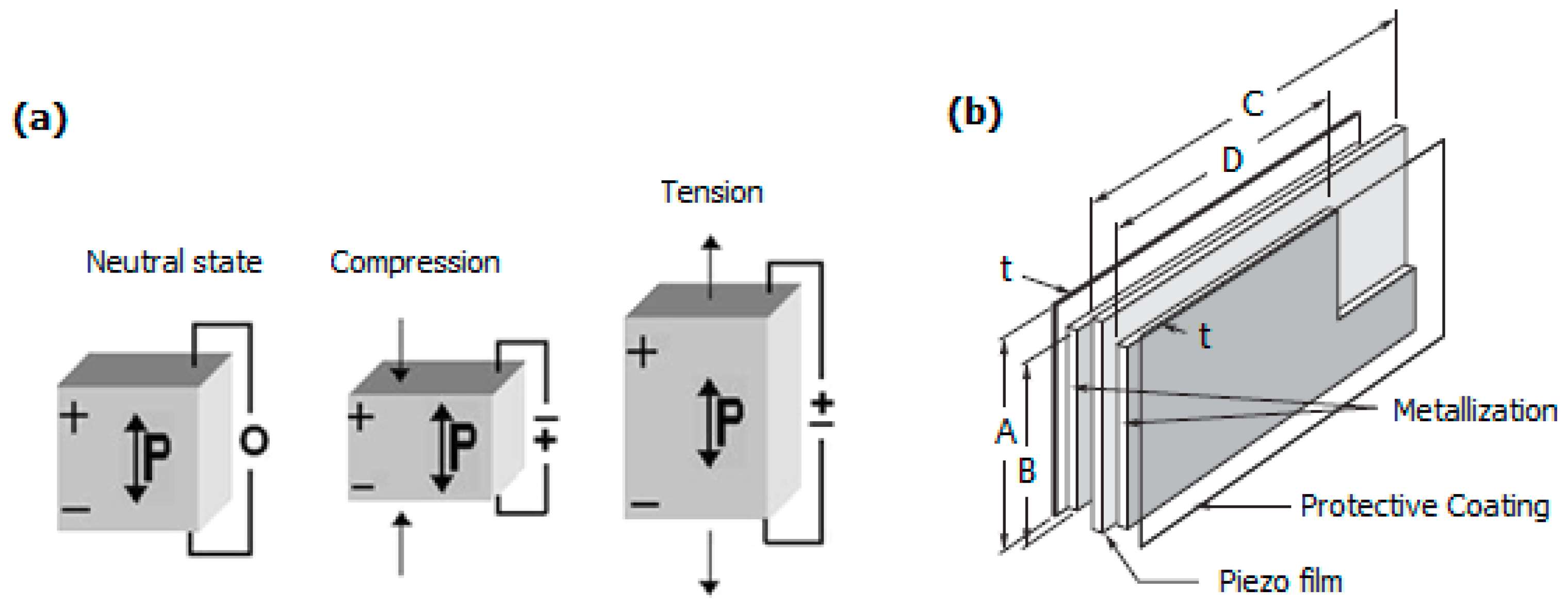

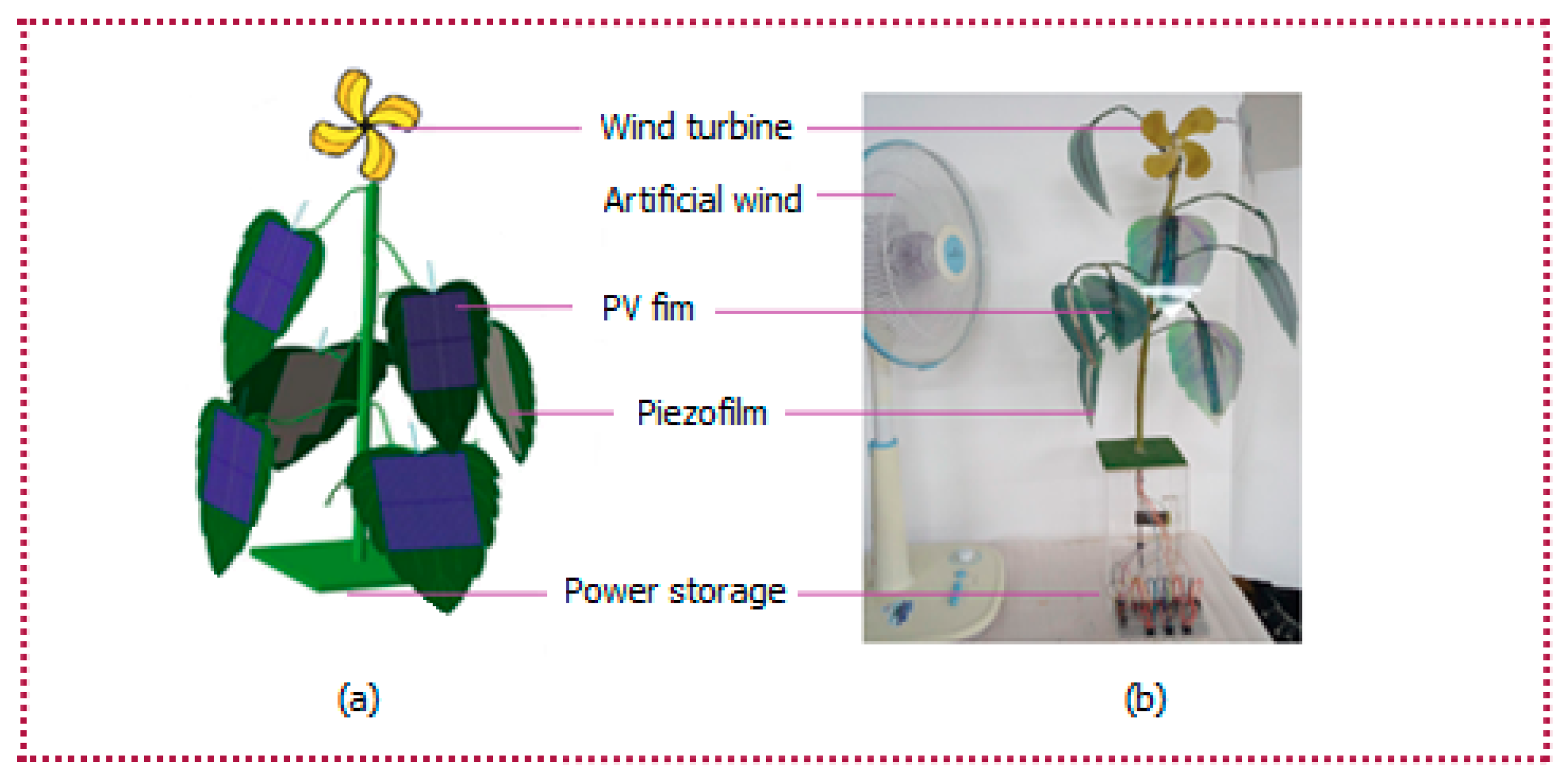
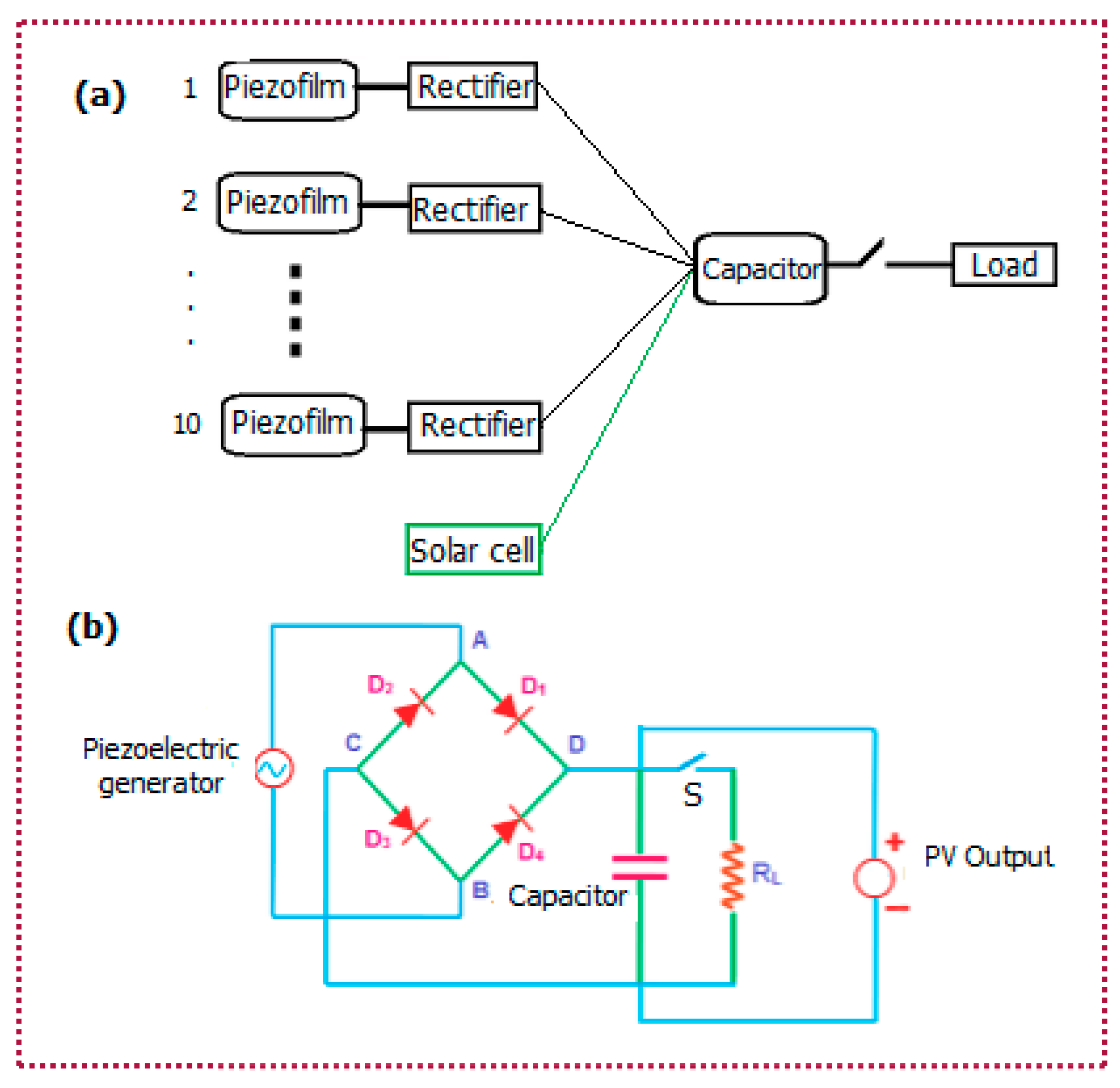
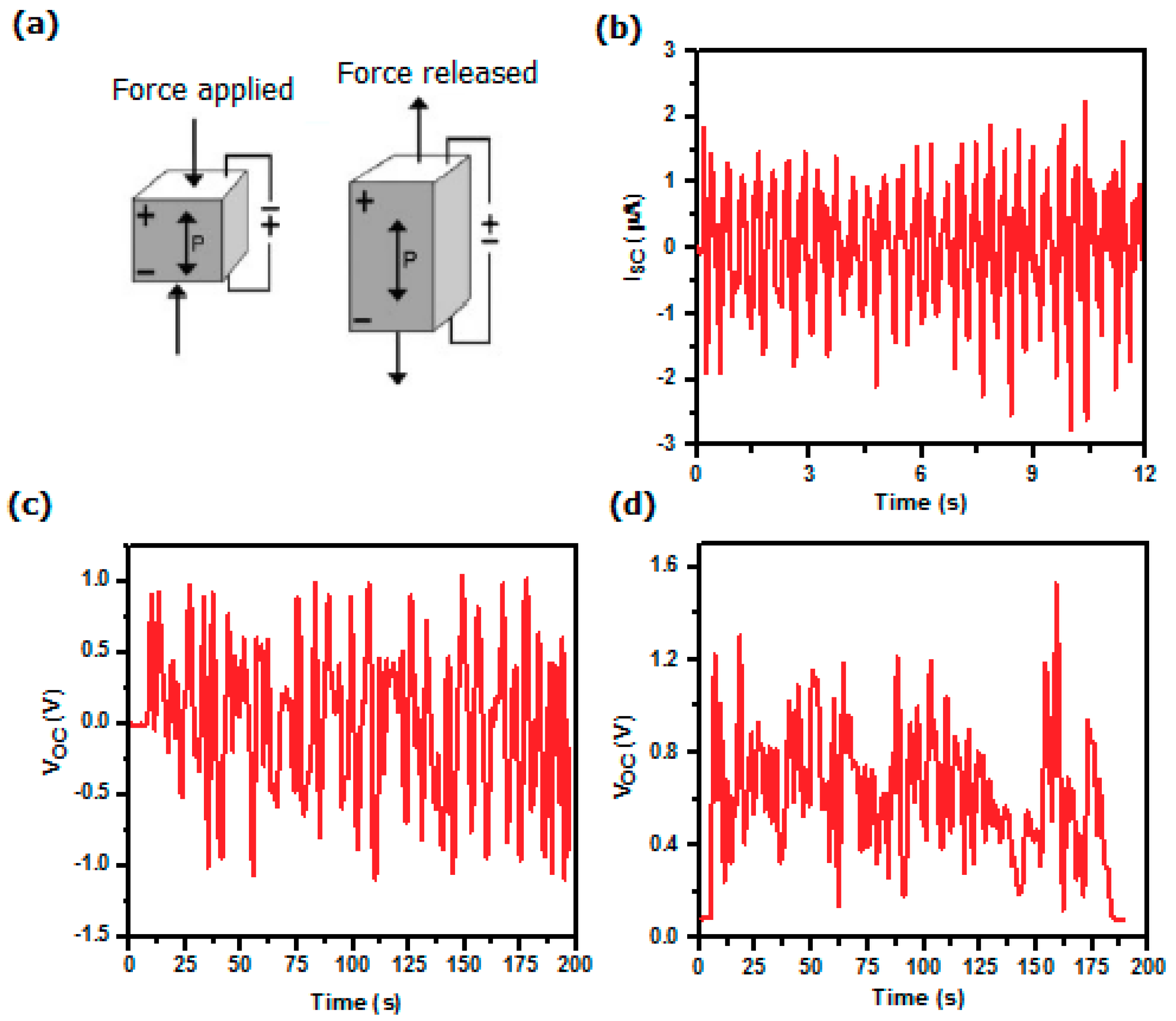
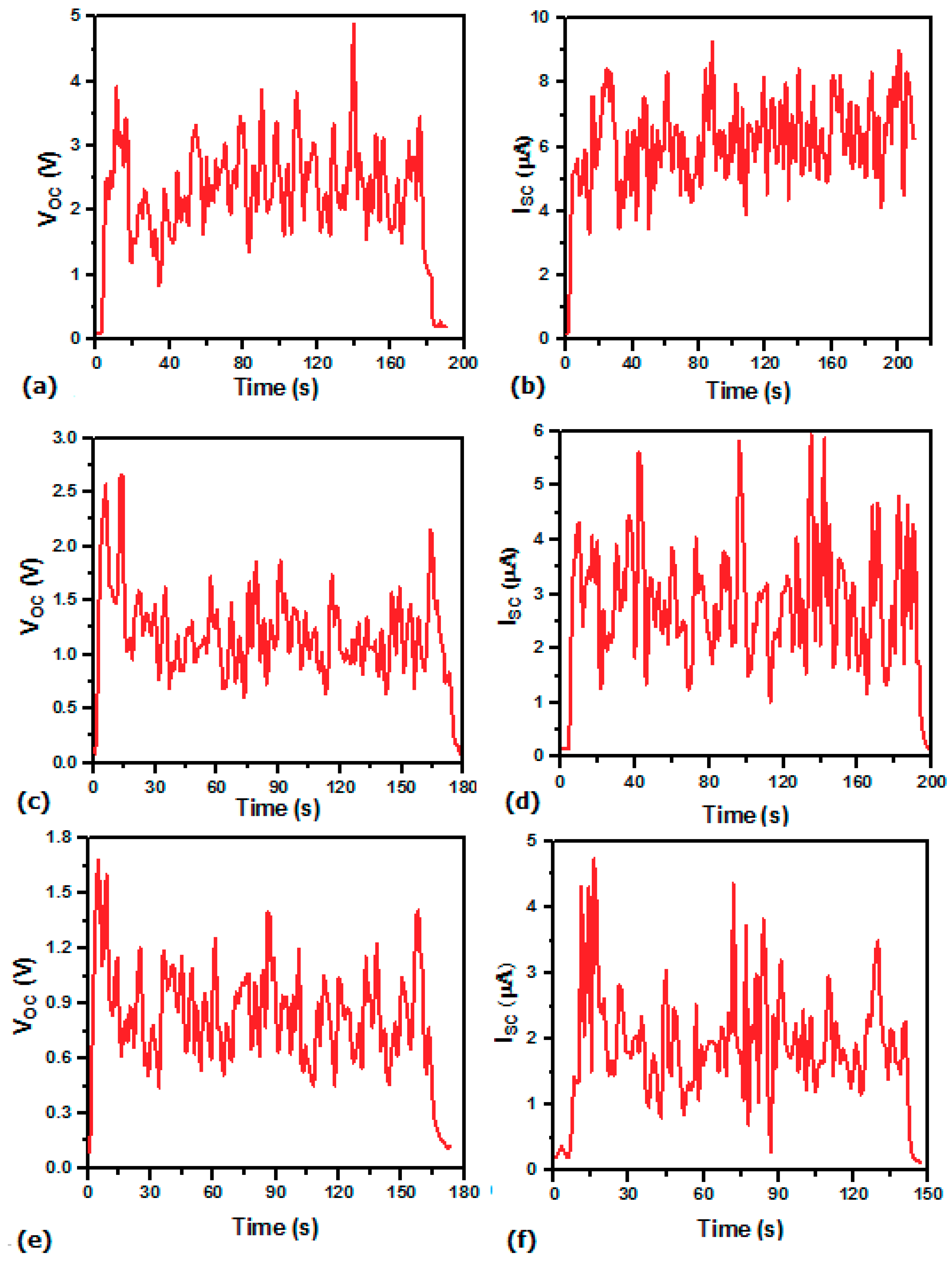
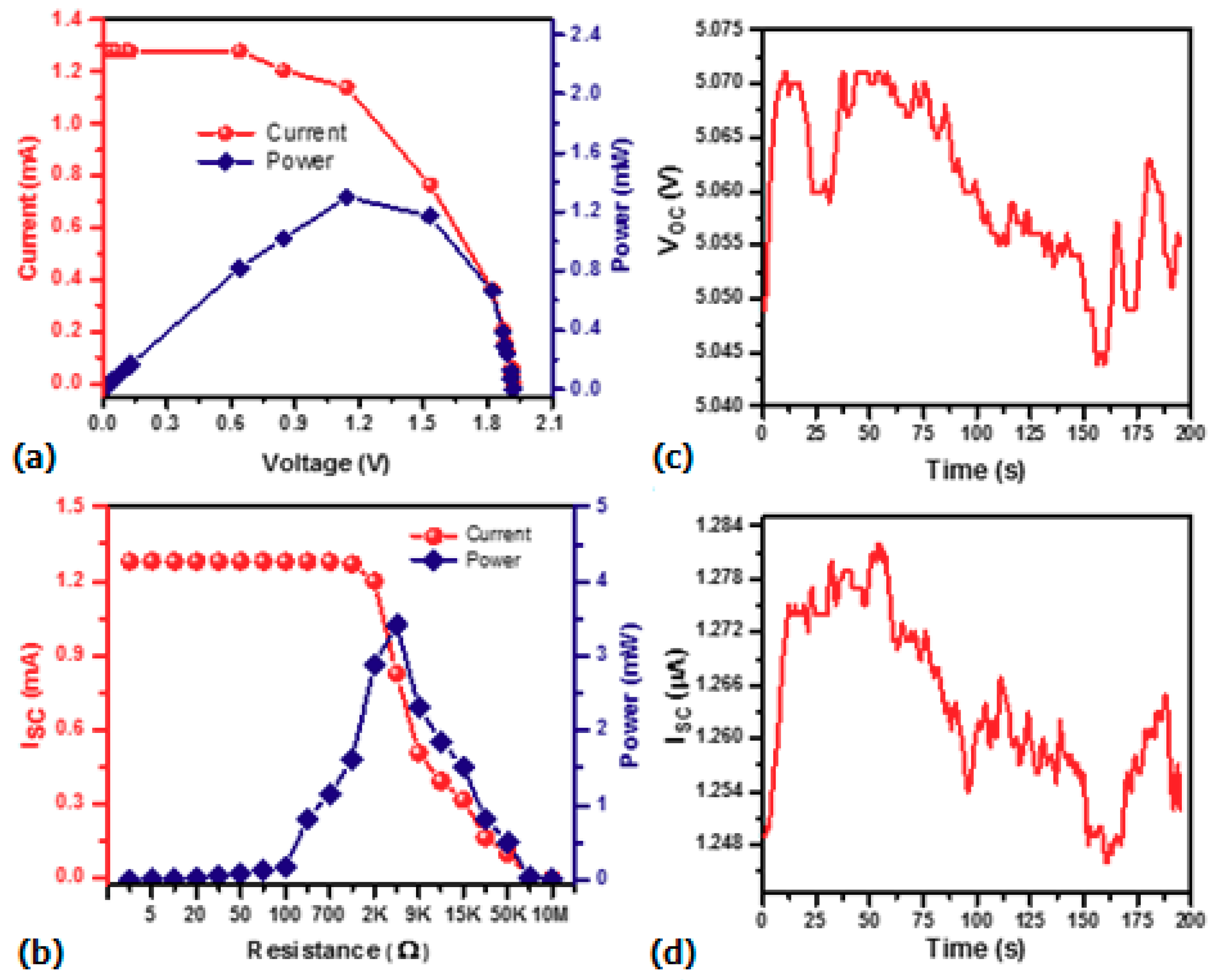
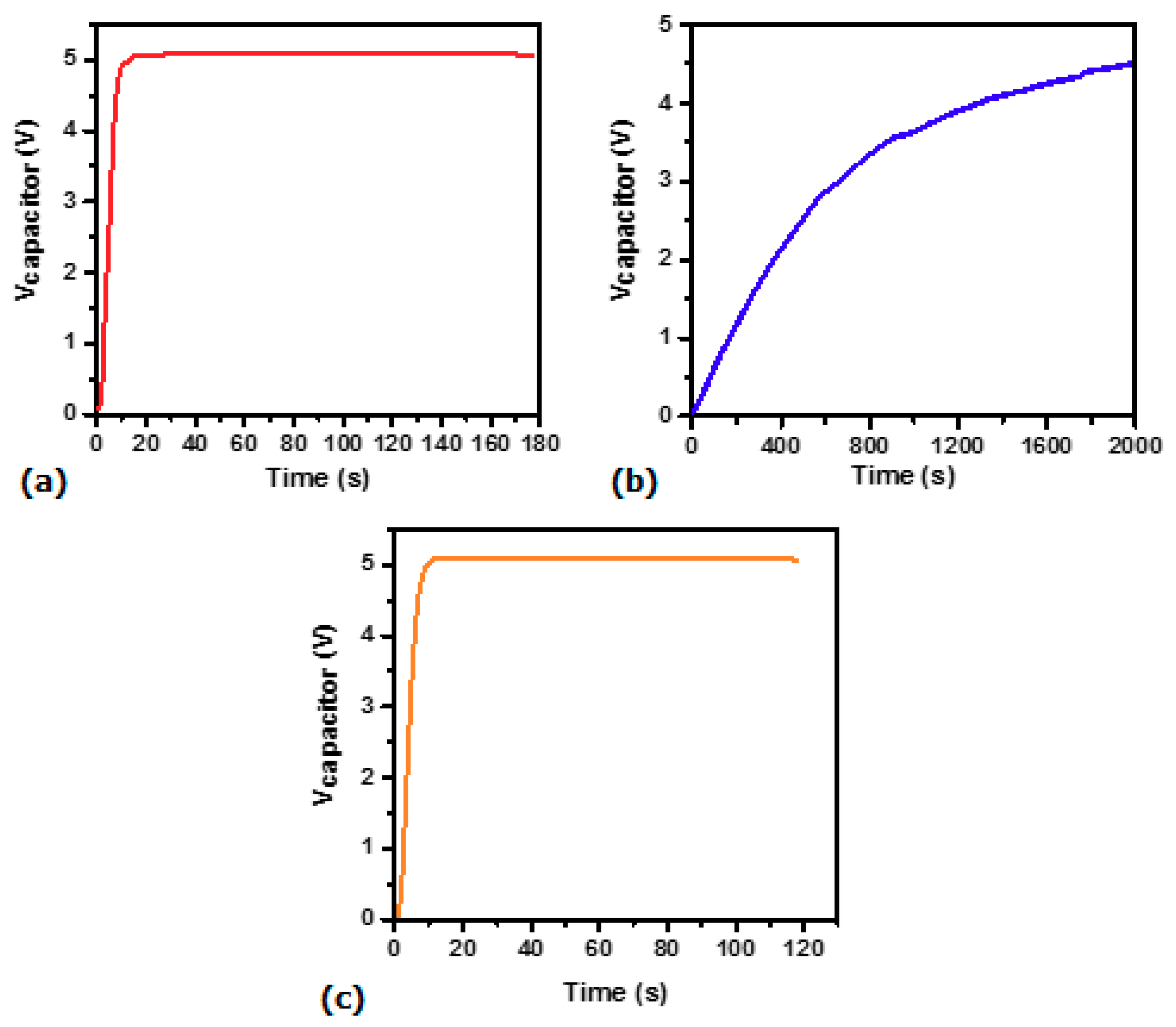
| Film Thickness (µm) | A Film (mm) | B Electrode (mm) | C Film (mm) | D Electrode (mm) | Total Thickness (µm) | Capacitor (nF) |
|---|---|---|---|---|---|---|
| 28 | 21 | 18 | 170 | 155.7 | 205 | 11 |
© 2019 by the authors. Licensee MDPI, Basel, Switzerland. This article is an open access article distributed under the terms and conditions of the Creative Commons Attribution (CC BY) license (http://creativecommons.org/licenses/by/4.0/).
Share and Cite
Ahmed, R.; Kim, Y.; Zeeshan; Chun, W. Development of a Tree-Shaped Hybrid Nanogenerator Using Flexible Sheets of Photovoltaic and Piezoelectric Films. Energies 2019, 12, 229. https://doi.org/10.3390/en12020229
Ahmed R, Kim Y, Zeeshan, Chun W. Development of a Tree-Shaped Hybrid Nanogenerator Using Flexible Sheets of Photovoltaic and Piezoelectric Films. Energies. 2019; 12(2):229. https://doi.org/10.3390/en12020229
Chicago/Turabian StyleAhmed, Rahate, Yeongmin Kim, Zeeshan, and Wongee Chun. 2019. "Development of a Tree-Shaped Hybrid Nanogenerator Using Flexible Sheets of Photovoltaic and Piezoelectric Films" Energies 12, no. 2: 229. https://doi.org/10.3390/en12020229
APA StyleAhmed, R., Kim, Y., Zeeshan, & Chun, W. (2019). Development of a Tree-Shaped Hybrid Nanogenerator Using Flexible Sheets of Photovoltaic and Piezoelectric Films. Energies, 12(2), 229. https://doi.org/10.3390/en12020229





